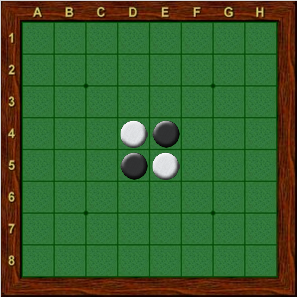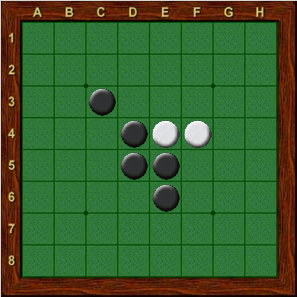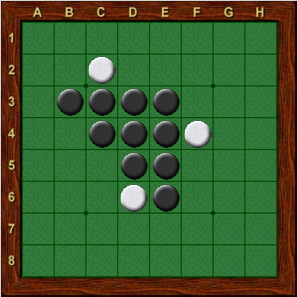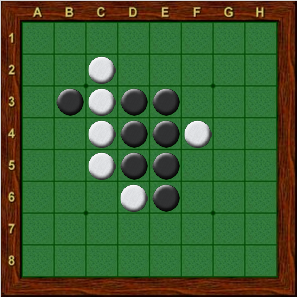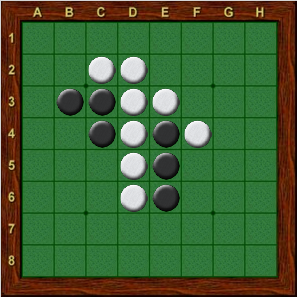Fang: Rules of Othello
Zur Navigation springen
Zur Suche springen
| Klicke hier für die deutsche Version | |
| Navigation: Main Page > Learn Othello > Book Fang | << previous chapter << - >> next chapter >> |
Rules of Othello
Objective
To have the most discs at the end of the game.
General Rules
- Each player starts with 32 disks at hand. One side of each disk is black, the other side is white.
- One player plays their disks white side up and the other player plays their disks black side up. The player playing their disks white side up is called white, the player playing their disks black side up is called black
- Black always plays first.
- Both players take turns playing valid moves into empty squares. (Black plays, then White plays, then Black plays, then White plays, etc). After playing a valid move, the appropriate disks are “flipped” to the current player’s color. (See the following example for more details on valid moves and flipping disks).
- If a player has no valid moves– they must pass their turn. The other player then plays a second turn in a row. If the second player still has no legal moves, they must pass again. This means that a player can potentially move 2, 3, or even 15 times in a row. When a player passes, they give one of their disks to their opponent.
- The game ends when both players have no legal moves – in most cases this is when the board has no empty squares left. In rare cases – the game will end because neither player has a legal move in the position.
- Valid Moves:
- Moves must be played to an empty square adjacent to a disk of the opposing color
- You must play a move that “outflanks” disks of the opposing color. Disks that are “outflanked” are flipped to the color of the disk that was played.
A Simple Example:
| As the second move of the game, the white player plays to the F4 square. The disk on E4 is outflanked by the D4 and F4 disks and it is flipped to white. | 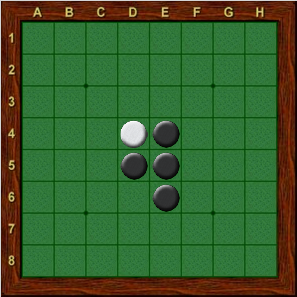
|
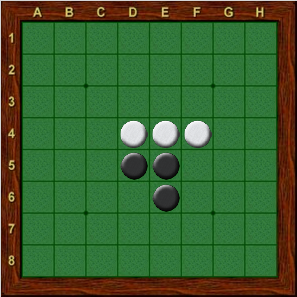
|
| BEFORE WHITE PLAYS F4 | AFTER WHITE PLAYS F4 |
A Few More Complicated Examples:
| Navigation: Main Page > Learn Othello > Book Fang | << previous chapter << - >> next chapter >> |
